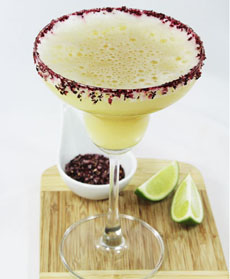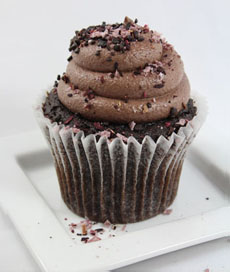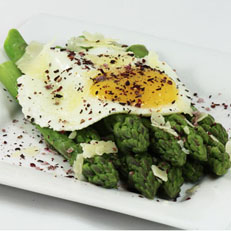TIP OF THE DAY: Hibiscus Salt & Ways To Use It

|
A number of years ago, hibiscus flowers became a trendy ingredient for mixologists and pastry chefs, with the import of Wild Hibiscus Flowers in Syrup from Australia’s Wild Hibiscus Flower Company. It took us this long to try the company’s second hibiscus product, Wild Hibiscus Flower Pyramid Salt Flakes. Salty, fruity-zingy-tart and beautiful, it’s become the latest “it” gift for us. WHAT IS HIBISCUS SALT? First, what is hibiscus? It’s a genus of flowering plants in the mallow family, Malvaceae—the same genus that gave us marshmallow. The genus contains several hundred species that are native to subtropical and tropical regions throughout the world. The flowers often have vivid colors and fragrances. The blossoms are used as a flavoring for everything from beverages to ice pops (we highly recommend hibiscus iced tea. The flavor is fruity and floral, with a tart, red fruit backbone. The blossoms are also used to make a gourmet finishing salt with a pyramid shape similar to England’s Maldon salt and Cyprus Sea Salt. Hibiscus salt is a blend of dried, ground hibiscus flowers and Australian pyramid salt flakes. Finishing salts are top-quality salts that are known for their unique textures, which allow them to quickly dissolve when applied to finished dishes. These include flake salt, fleur de sel, and French sea salt. Flake salts are harvested all over the world: the Maldon River in England, Anglesey off the island of Wales, New Zealand, and Australia. The pink flake salt shown here comes from Australia’s Murray-Darling River Basin, where a red pigment, carotene, is secreted by algae. The crystals are small, fine, flat and pink; combining with the hibiscus yields a salt with violet hues. In addition to delicate flavor and eye appeal, the salt is rich with calcium and magnesium, among other minerals. The product is call natural, certified kosher (by Kosher Australia) and gluten free. Hibiscus salt can be sprinkled as is, crumbled for a finer presentation or used in a salt grinder. It can be used with sweet and savory foods and beverages. |
|
|
|
||



